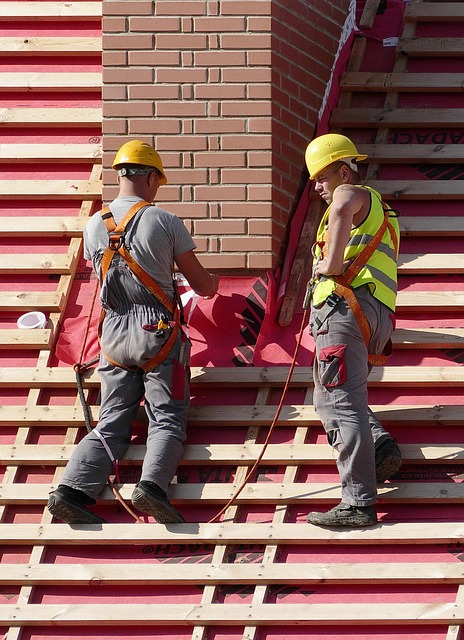Utility potholing services are essential for safe and efficient excavation projects, using advanced technologies like GPR to accurately locate underground utilities. Meticulous pre-excavation planning, including permit obtaining and stakeholder communication, minimizes risks and ensures compliance with regulations. These services prevent damage to critical infrastructure, reduce disruptions, and prioritize crew safety, making them indispensable in today's construction industry. With technological advancements and regulatory changes driving best practices, utility potholing services continue to evolve, focusing on enhanced accuracy, reduced human error, and eco-friendly practices for a future-proof approach.
In the realm of excavation projects, navigating underground infrastructure safely is paramount. This is where utility potholing services play a pivotal role, ensuring compliance and mitigating potential hazards. Compliance-focused utility potholing involves meticulous mapping and exposure of buried utilities before excavation, preventing damage and costly disruptions. This article delves into the essentials of utility potholing, exploring its significance, best practices, and emerging trends shaping this vital process.
Understanding Utility Potholing: The Basics and Why It Matters
Utility potholing services are an essential component of any excavation project, ensuring that critical underground utilities are located and marked accurately to prevent damage. This meticulous process involves skilled professionals who use advanced equipment to identify and expose buried pipes, cables, and other infrastructure. By doing so, construction teams can navigate around these vital assets safely and efficiently.
The importance of utility potholing lies in its ability to mitigate risks associated with accidental damage to underground utilities. It allows for precise mapping and documentation, enabling project managers to plan excavation activities accordingly. This, in turn, reduces the likelihood of costly disruptions, service interruptions, or even safety hazards that can arise from damaging underground infrastructure during excavation work.
Pre-Excavation Planning: A Comprehensive Checklist for Compliance
Before any excavation project begins, meticulous pre-excavation planning is crucial to ensure compliance with local regulations and safety standards. This process involves a comprehensive checklist that utility potholing services should thoroughly review and address. The first step includes identifying and locating all underground utilities within the project area. This can be achieved through advanced technology like ground-penetrating radar (GPR) or calling local one-call centers to mark the positions of gas, water, electrical, and telecommunications lines.
Additionally, obtaining necessary permits from relevant authorities is essential. Each utility company may have specific requirements, so coordinating with them to understand their processes and deadlines is vital. The checklist should also account for public safety by planning access routes, traffic control measures, and emergency response procedures. Effective communication among all stakeholders—from contractors to regulatory bodies—is key to a successful project and minimizes the risks associated with utility potholing.
The Role of Utility Potholing Services in Ensuring Safe Digging
Utility potholing services play a pivotal role in ensuring safe digging practices for excavation projects. These specialized services involve the careful detection and marking of underground utilities before any excavation work commences. By employing advanced technologies like ground-penetrating radar (GPR) and electromagnetic location, utility potholers can identify the precise locations of various utilities such as water pipes, gas lines, electrical cables, and communication cables.
This proactive approach minimizes the risk of damaging critical infrastructure during excavation, which could lead to costly repairs, service disruptions, and even safety hazards. By providing clear and detailed markings on the ground, utility potholing services guide excavators in avoiding these hidden assets, promoting a safe working environment for construction crews and ensuring compliance with regulations governing safe digging practices.
Best Practices and Future Trends in Compliance-Focused Utility Potholing
In the realm of utility potholing services, best practices continue to evolve as technology advances and regulatory standards tighten. One key trend is the increasing adoption of advanced mapping and location-based technologies to identify and prioritize underground utilities before excavation projects begin. This helps in minimizing damage risks and ensures faster, more efficient work. Additionally, regular training and certification programs for potholing teams are gaining prominence, promoting safe practices and a deeper understanding of diverse utility infrastructure.
Looking ahead, future trends point towards even greater integration of automation and AI-driven systems. These innovations promise to optimize potholing processes, enhancing accuracy and reducing human error. Furthermore, the push for sustainability is driving the development of eco-friendly equipment and methods, aligning utility potholing services with broader environmental goals. As regulatory frameworks continue to refine compliance requirements, these best practices and trends will shape a more responsible, efficient, and future-proof approach to utility potholing.
Utility potholing services play a pivotal role in modern excavation projects, ensuring safety and compliance with stringent regulations. By integrating these services into pre-excavation planning, project managers can navigate complex underground networks efficiently, minimizing disruptions and risks. As industry trends evolve, adopting best practices and staying abreast of technological advancements in utility potholing will be key to enhancing safety, streamlining operations, and fostering a more sustainable construction landscape.
